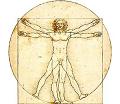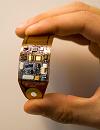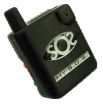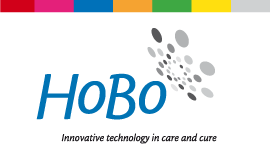
The following projects are currently being realised by Hobo or have been completed recently:
 |
Vitruvius: Versitile Interface for TRUstworthy VItal User (oriented) Services
Hobo, the Eindhoven Univeristy of Technology - chairs SPS and SAN, the Twente Institute for Wireless and Mobile Communications, MEDECS and Kempenhaeghe participate in the Vitruvius project. Aim of the project is to develop safe, universal, wireless data acquisition systems: one and the same system that can be applied to multiple applications (e.g. epilepsy and sleep and fitness). The project started in 2008 en will continue until 2012. |
 |
Tele-epilepsy project
In 2008 a consortium has been formed by SEIN Heemstede & Zwolle, University Hospital Utrecht, Pontes Medical, Kempenhaeghe and Hobo. Its mission is to develop and validate technology for epileptic seizure detection. The partners each focus on different modalities and target populations. Hobo and Kempenhaeghe are primarily looking into the ongoing development of ECG and accelerometry based seizure detection. The consortium acquired a NIG grant for its proposal in 2010; the project will run from 2010 to 2015. Ethical aspects on the application of technology will also be investigated. |
 |
Development and validation of a wearable ultra-low power prototype based on ECG
Together with the Holst Centre Hobo is working on a prototype device that is able to detect epileptic seizures by analysis of the ECG. Hobo's input consists of the algorithm and the clinical validation at Kempenhaeghe. Holst Centre integrates the algorithm with their wearable ultra-low power sensors. |
 - small.JPG) |
Accelerometry based detection of epileptic seizures
Tamara Nijsen received her PhD from the Eindhoven University of Technology in September of 2008. Hobo is currently continuing this work by trying to develop applicable technology from the proposed methods. |
 |
Heart rate based detection of epileptic seizures
Wouter van Elmpt performed a first study on this subject in 2003. Through the Master's project of Martien van Bussel this was continued, leading to an algorithm to detect epileptic seizures in real-time. During a project that was funded by the European Union a prototype was developed with a nearby company in 2006: the Epilepsy Seizure Monitoring System. Up until now these prototypes are being used at Kempenhaeghe for advanced diagnostics. |
 |
Video Observation System (VOS)
EEG Technology and Kempenhaeghe & Hobo have been developing a digital trigger-based videosystem
since 2005. VOS was used for the first time in 2006. Since then many updates have been implemented. Also a mobile version of the system has been developed. Hobo is involved in all aspects of this process: development, consultancy, implementation, etc. |
 |
Emfit: nocturnal tonic-clonic seizure monitor
Hobo is testing and validating sensor systems for epilepsy that have been developed by Emfit Ltd. Emfit uses this feedback to improve and expand their product portfolio. |
 |
Fall related injury prevention
With Brunelco B.V. Hobo has developed a system to inform a residant at Kempenhaeghe of a potentially dangerous situation. When this person stands up - without wearing his helmet - a friendly audio signal reminds him to put it on. As a consequence the resident suffers less from serious injuries that result from collapsing with epileptic seizures. |
 |
Detection of epileptic seizures through audio classification
In collaboration with the Eindhoven University of Technology Glen de Bruijne performed a first study in 2008 on the feasibility of detecting epileptic seizures through audio classification. Kempenhaeghe's current surveillance system is primarily based on audio based detection. This study showed that advanced methods for audio classification could substantially improve the sensitivity and specificity. |
 |
Market survey for systems that benefit epilepsy and sleep-wake disorder patients
During an internship at Hobo Hananto Setiawan performed a market survey for readily available systems (medio 2008) that could benefit the epilepsy and/or sleep cure & care. A number of the proposed systems were obtained and tested. |
 |
Accelerometry based fall detection
For My-Bodyguard a small project in the form of contract research was done in 2007. During an internship Ruud Hardam investigated the feasibility of improving an existing fall detector by applying 3D-accelerometrie. |




